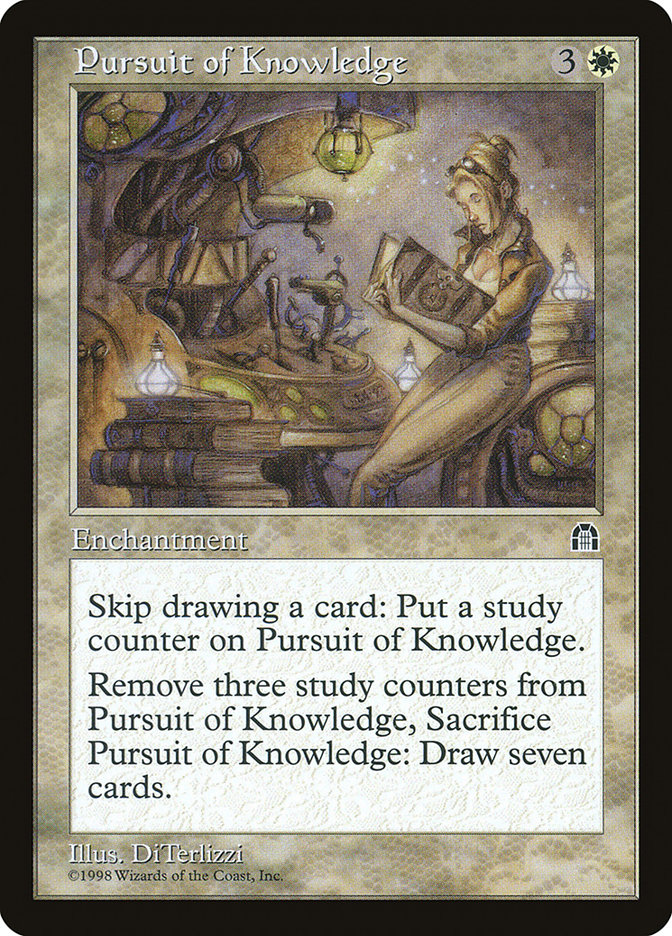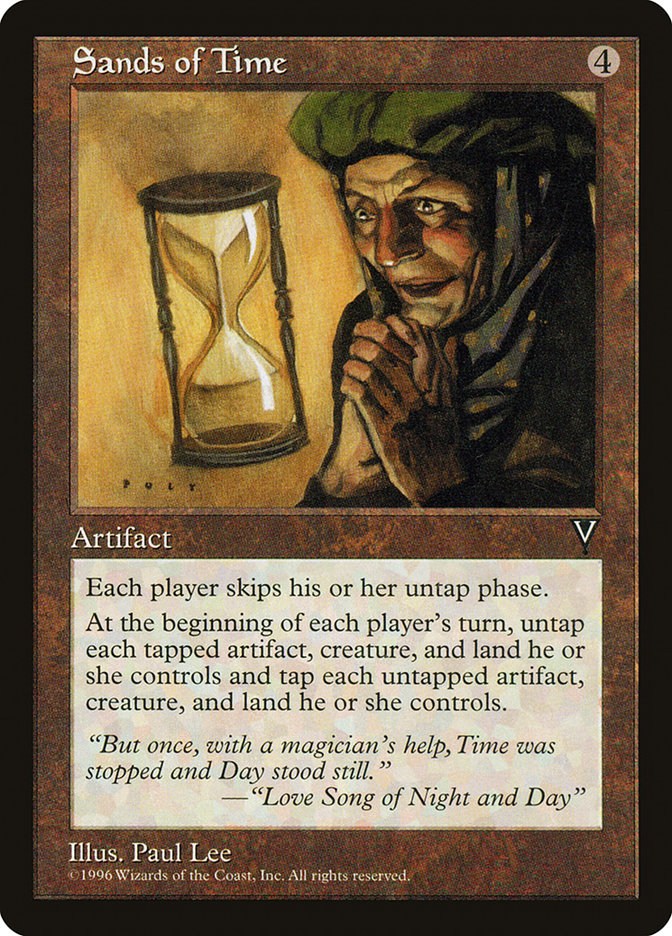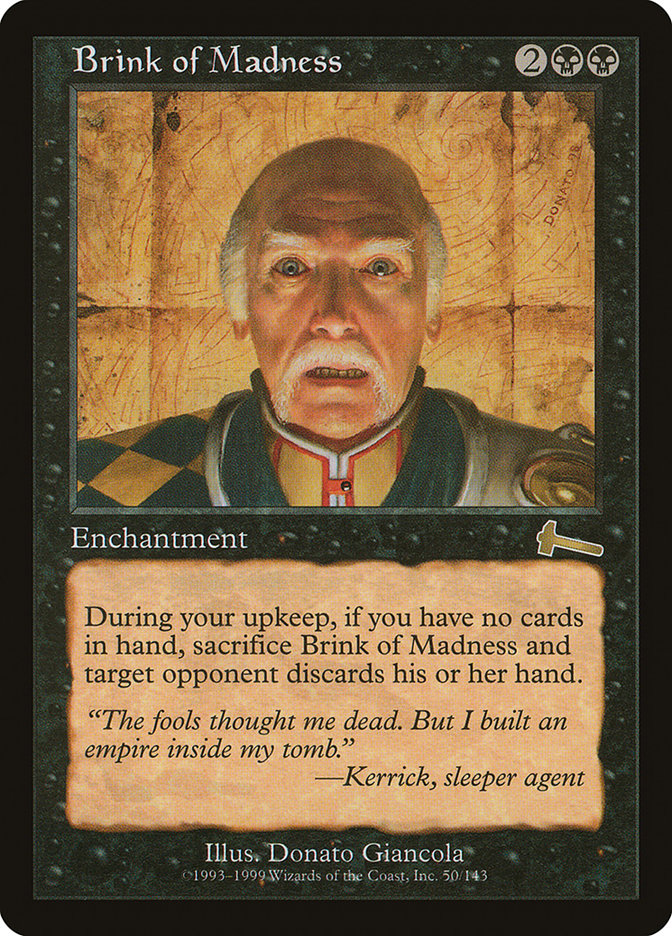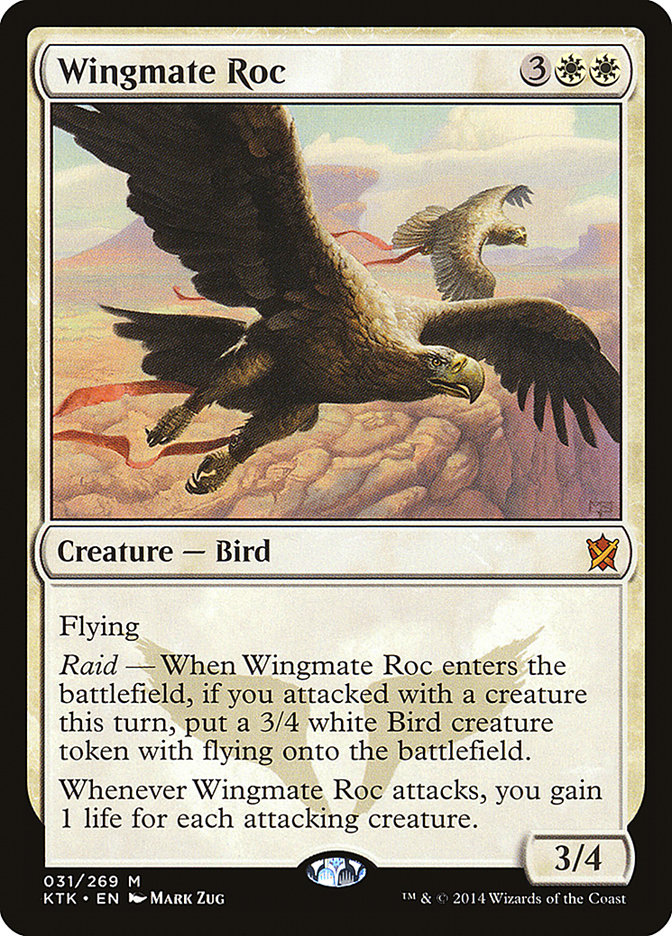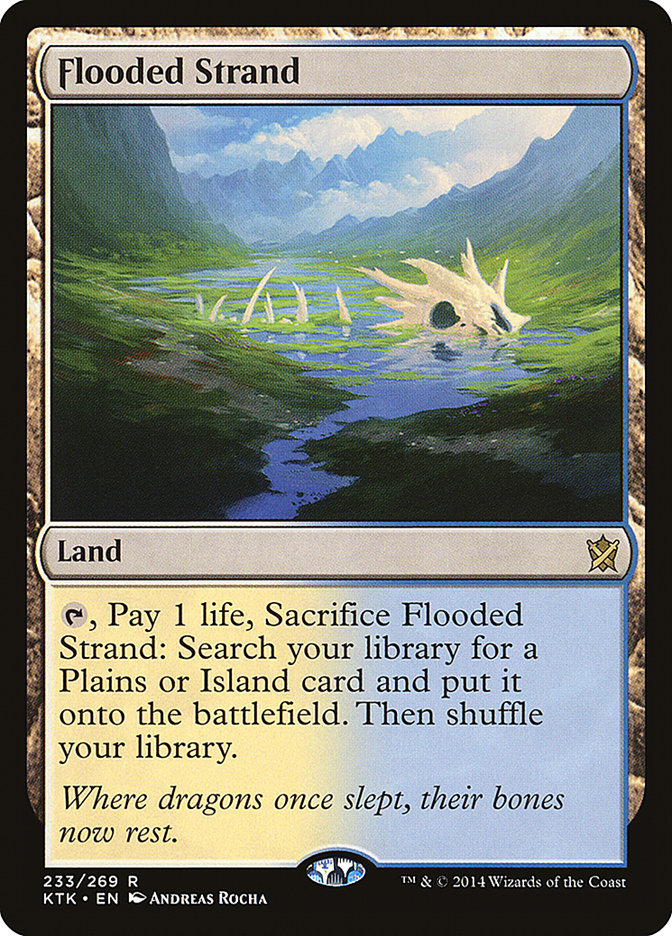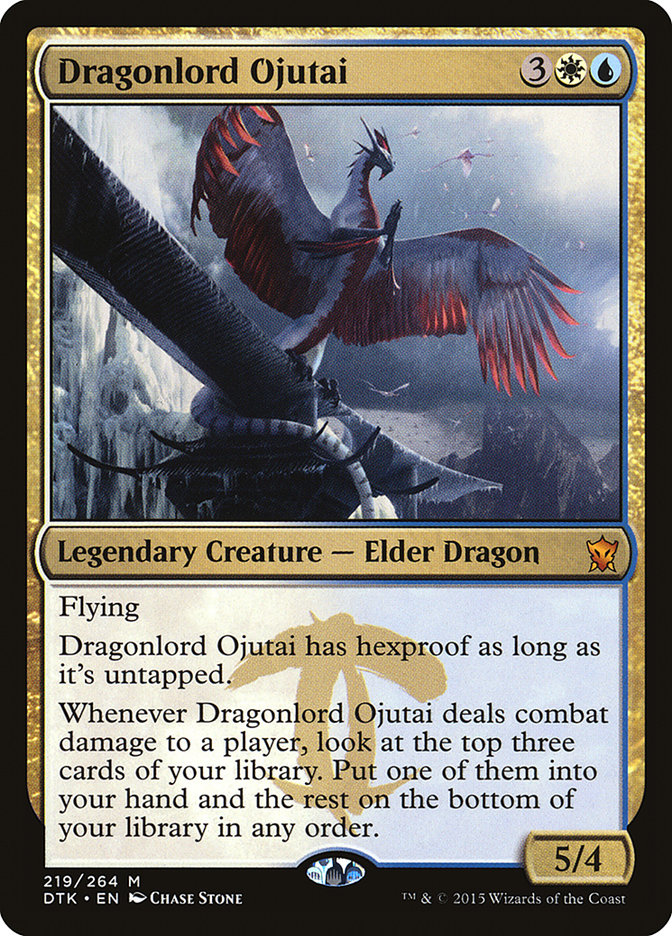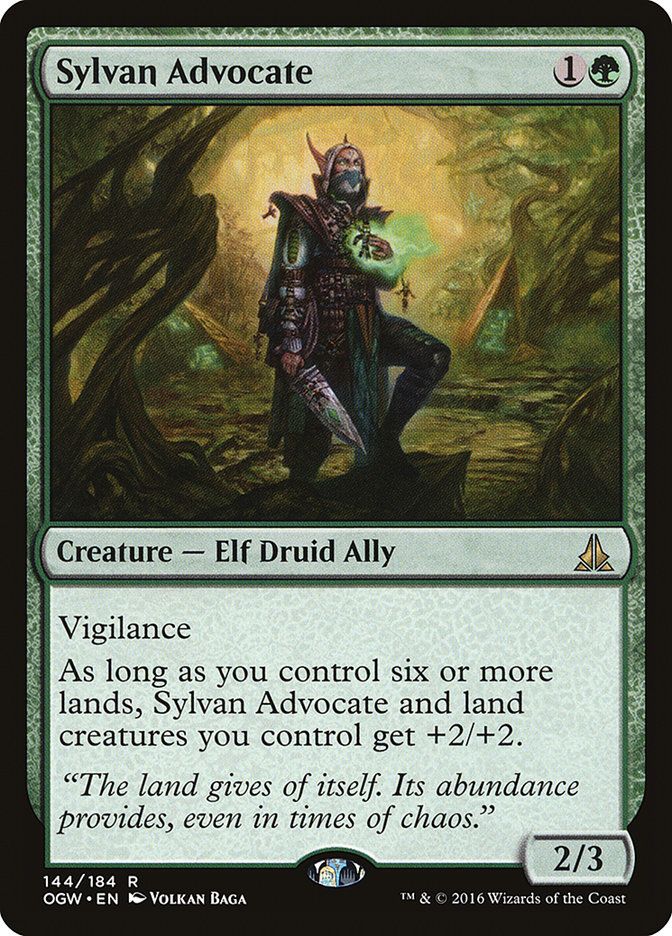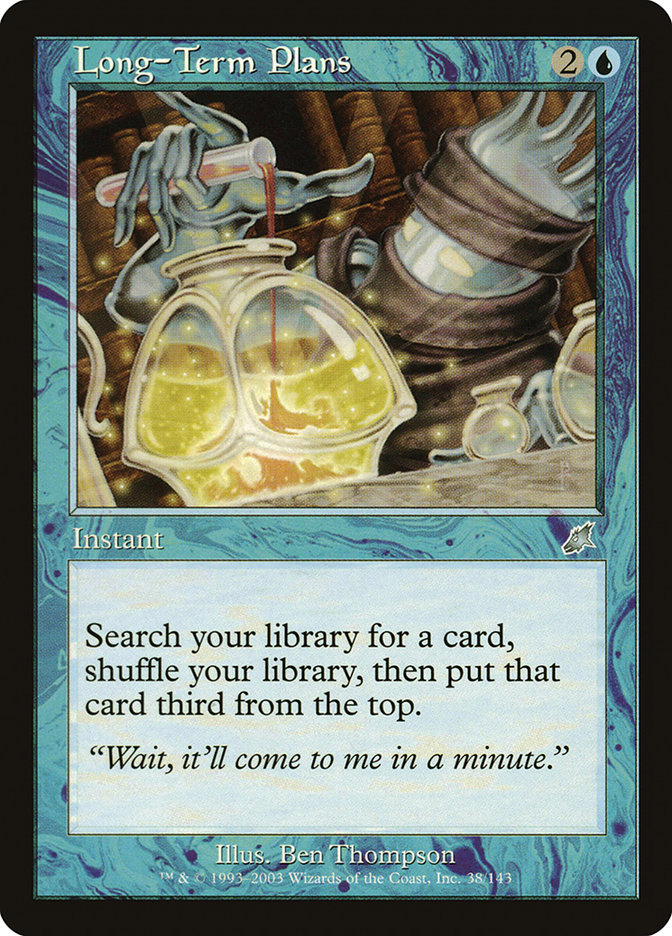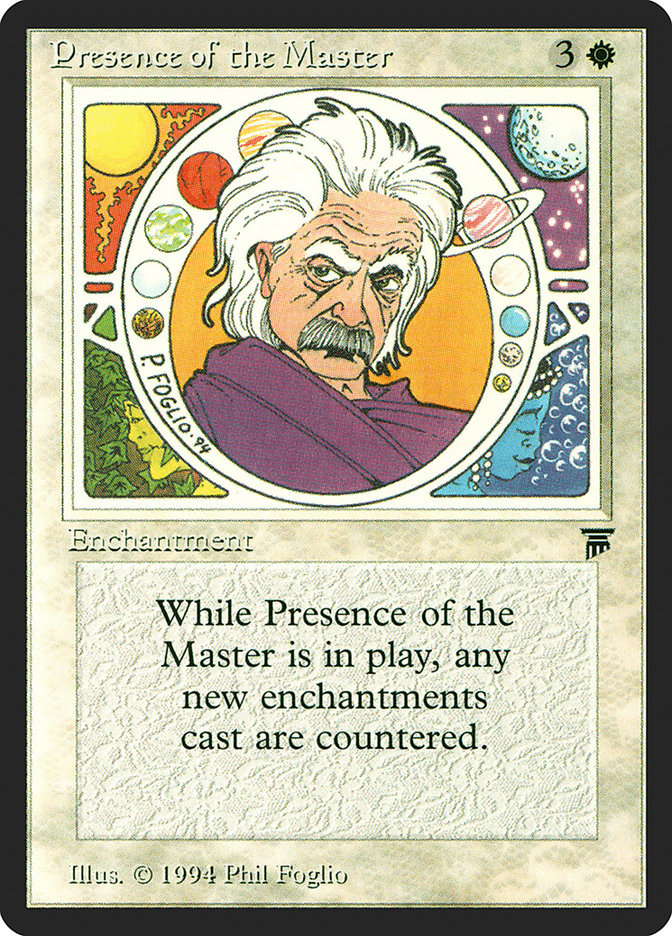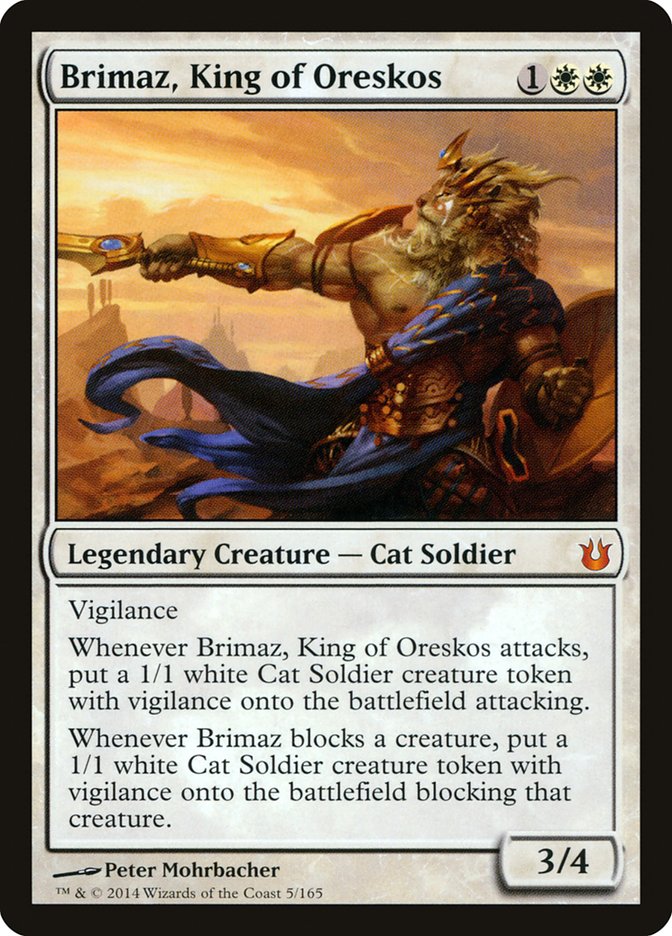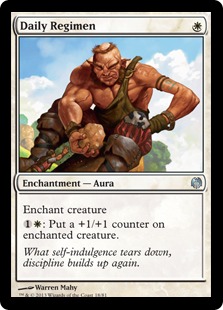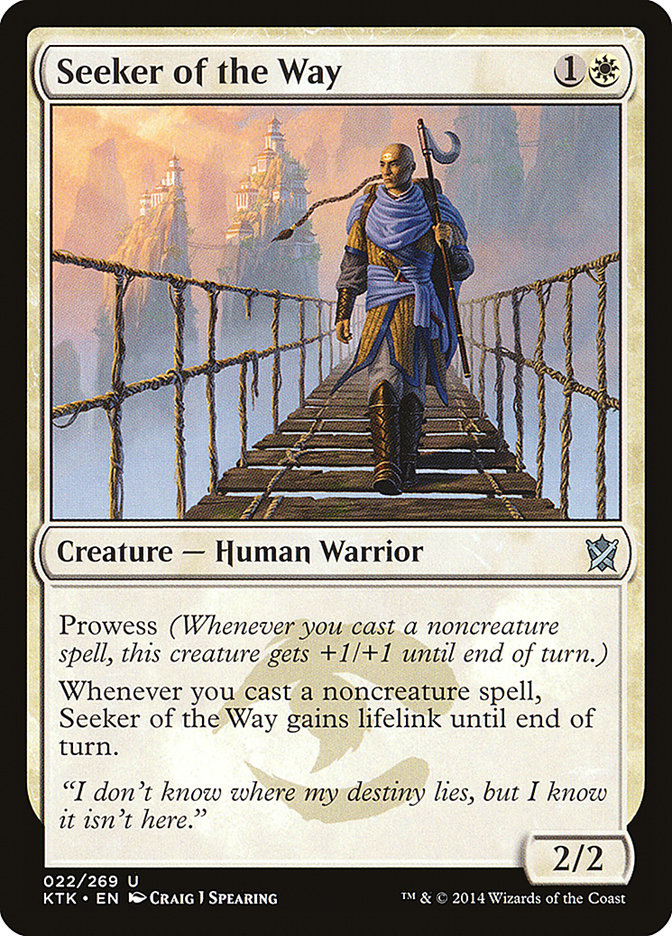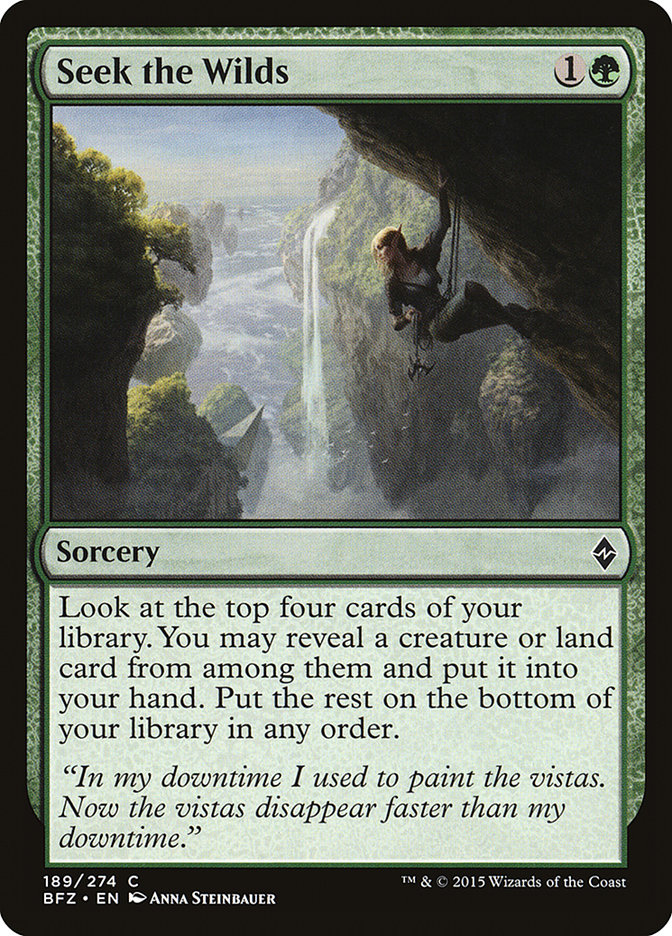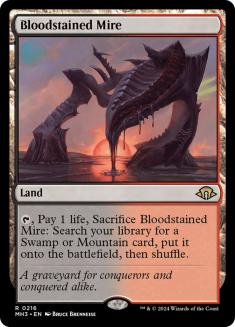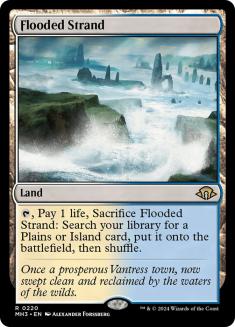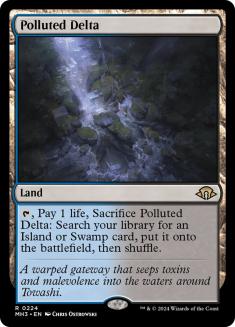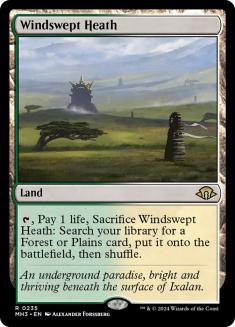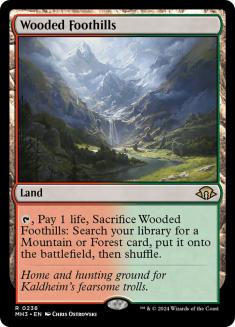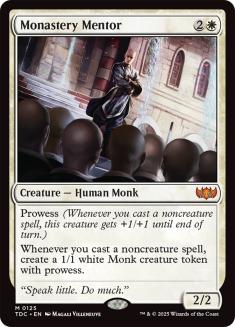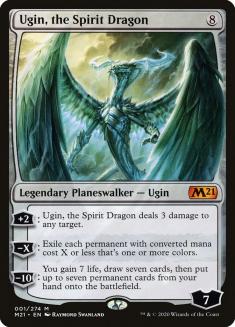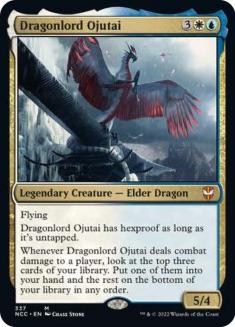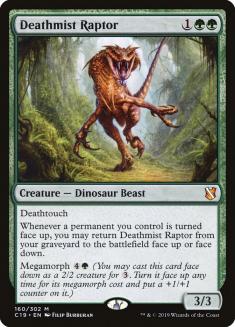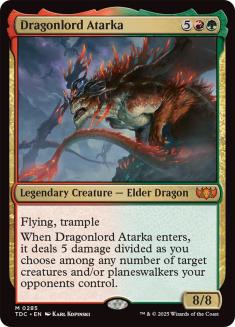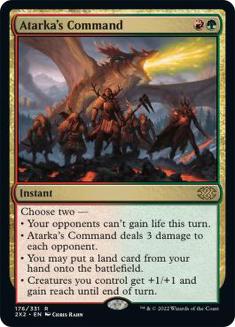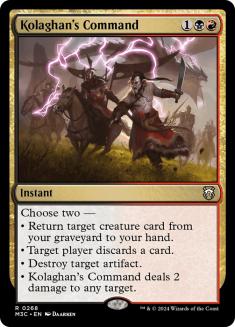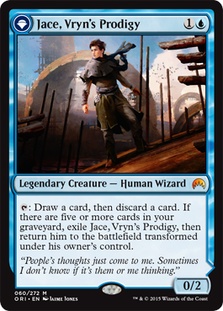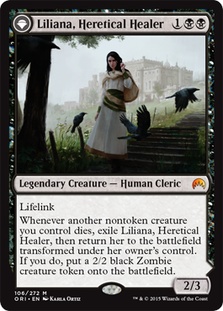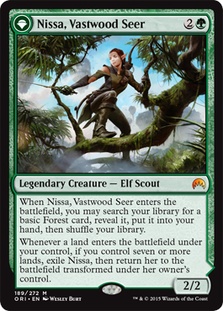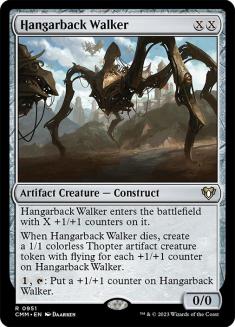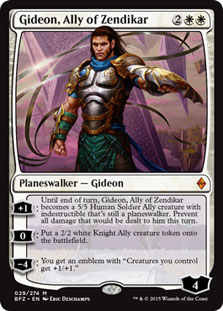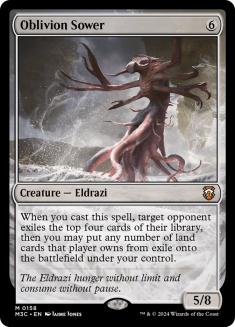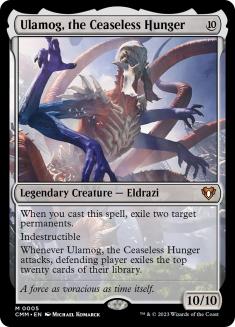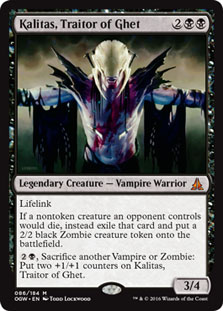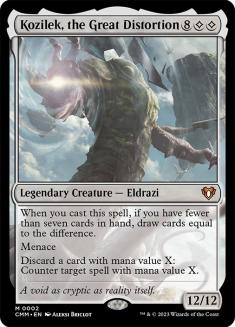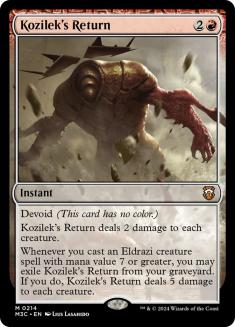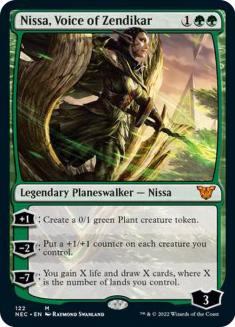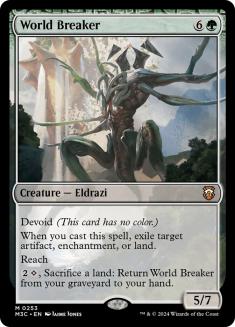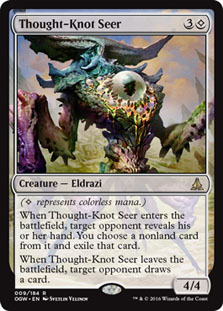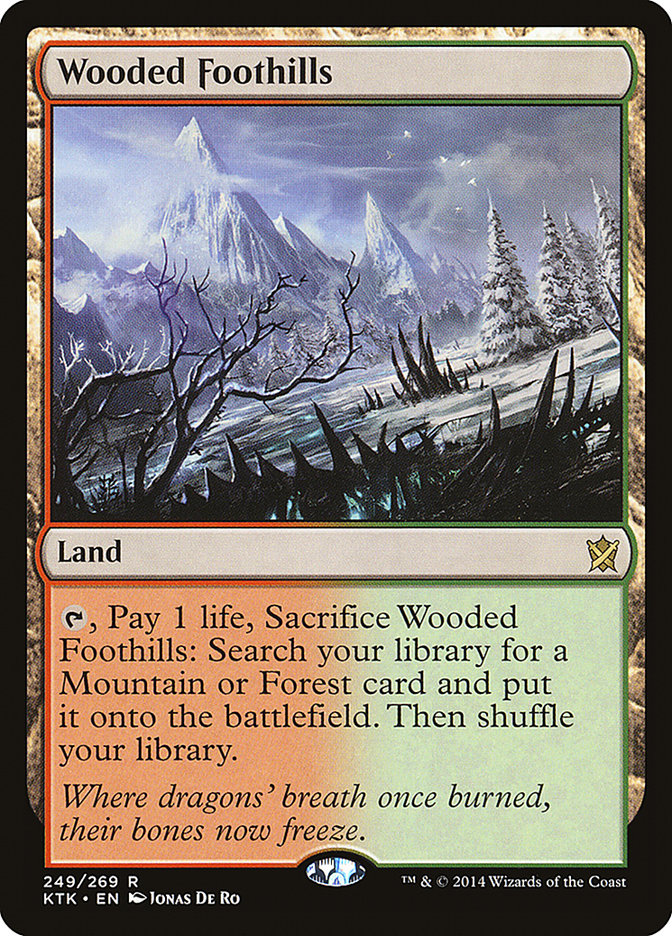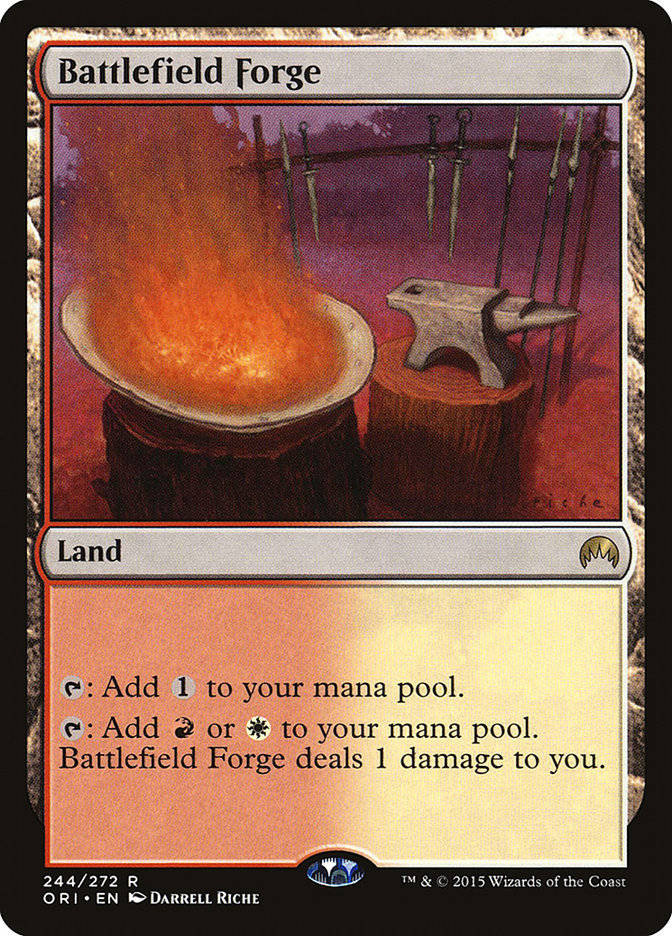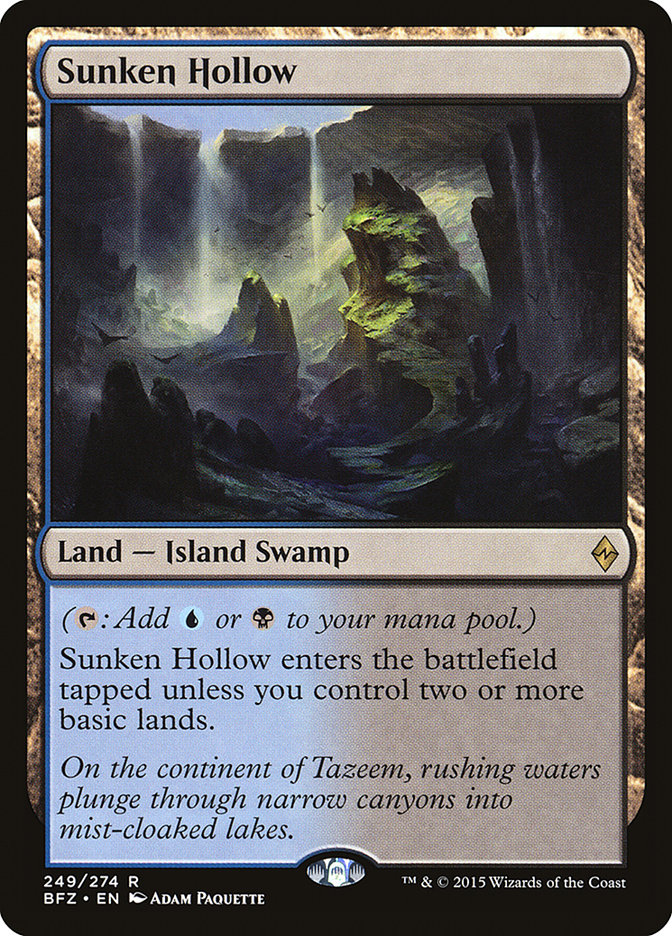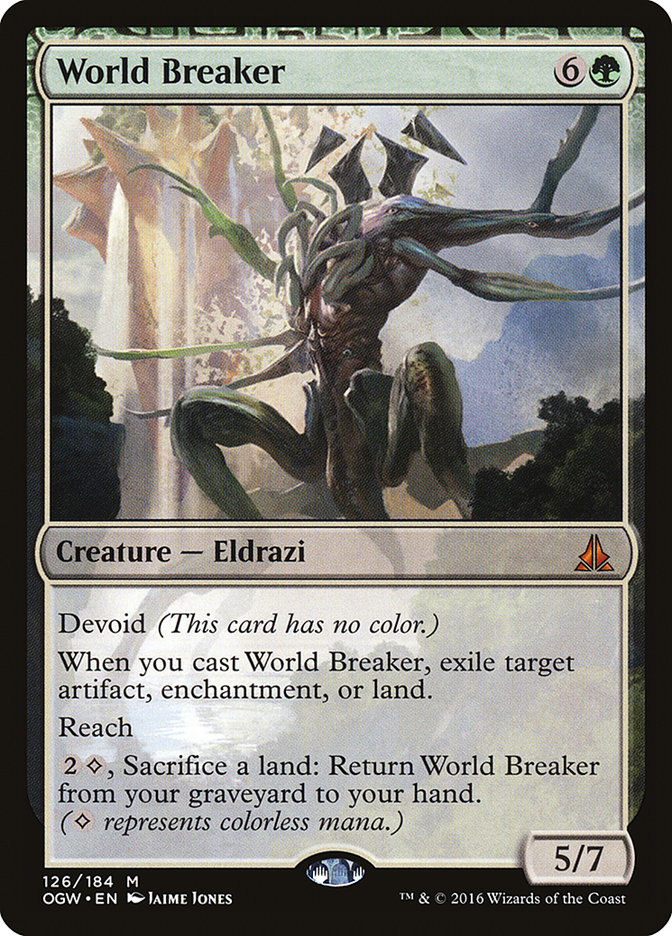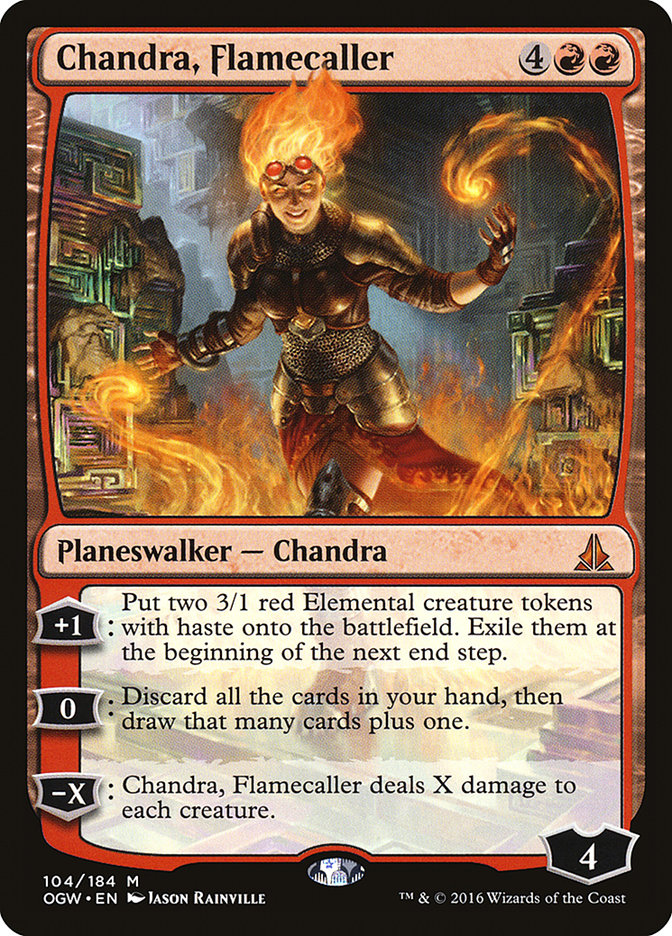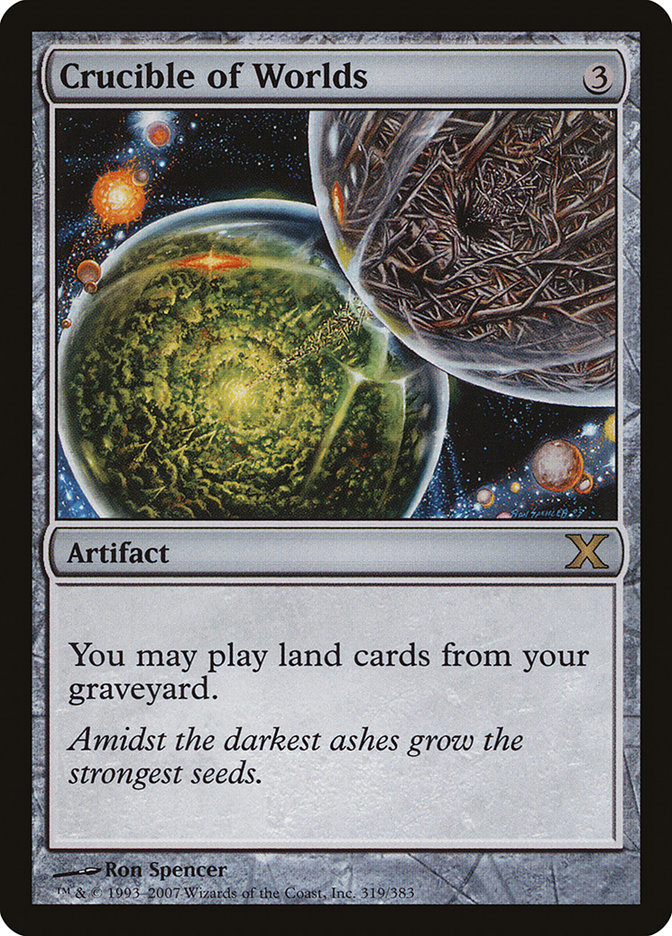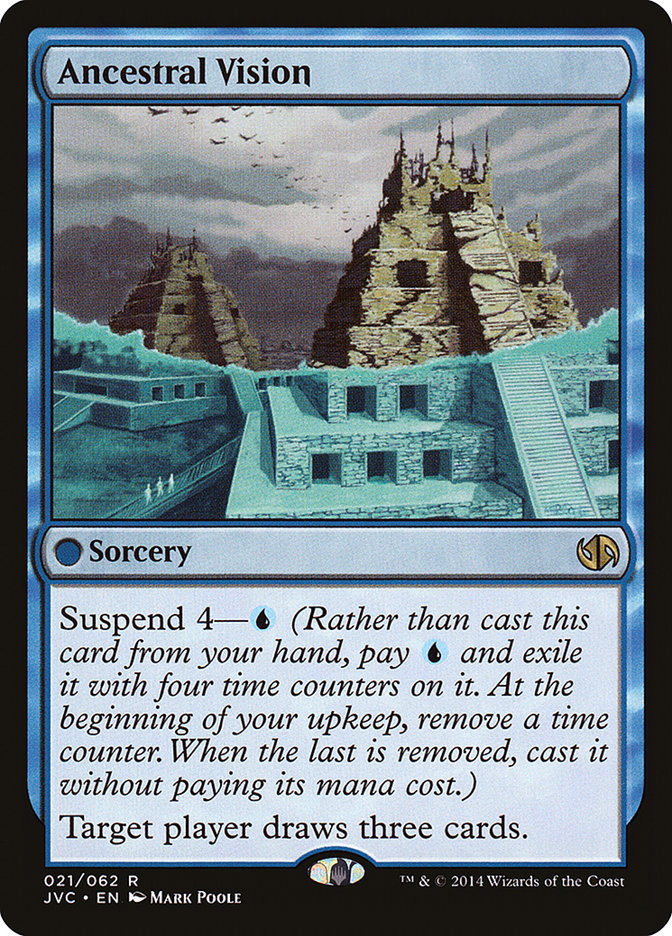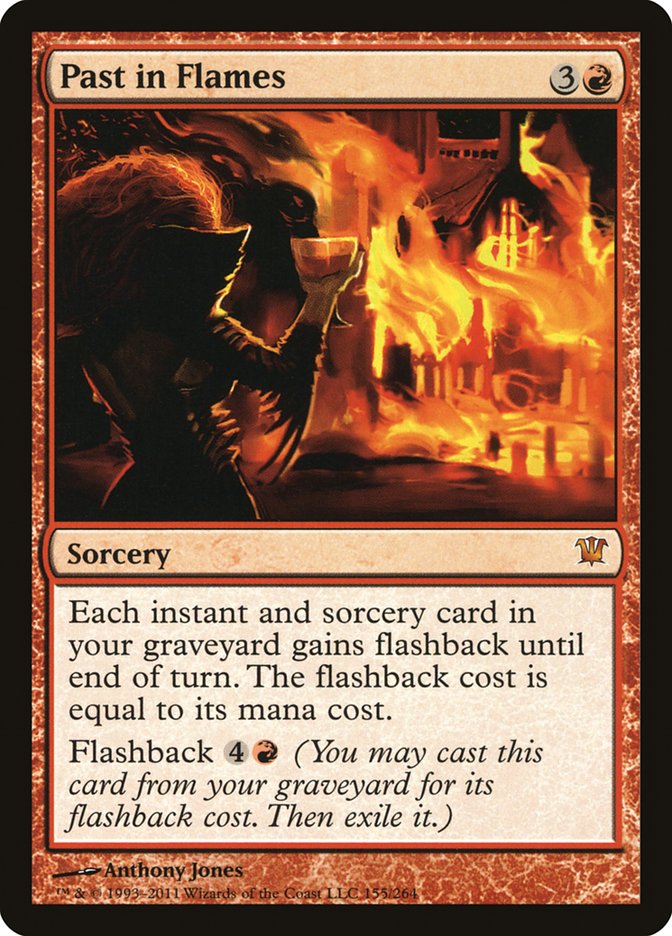Last week, I wrote an article called How To Buy Into Modern. It chronicled my strategy for getting into Modern by taking a deliberate, principled, patient approach to Magic’s fastest growing format.
In the comments section, several readers requested that I write a companion article about Standard. They understood how to approach a non-rotating format but were having trouble dealing with Standard’s financial velocity. What’s the best way to buy into a format where decks seem to change every week, sets rotate every few months, and almost all your cards will eventually lose value?
Buying Time
Everyone who has been to college knows about the textbook racket.
You go to the bookstore before your first class, drop ninety bucks on a book no one has ever heard of, crack it four times over the course of the term, and sell it back for $4.30 in late April. Some people hold onto their old books out of defiance or a misplaced belief that they will someday reference a topic discussed in Introduction to Philosophy, but this rarely happens. In most cases, you pay about $20 for each time you will reference your textbook during the semester. It’s kind of depressing to think about until you realize that you will be paying off your student loan debt for the next century, but I digress.
Why did your textbook lose so much value? It’s usually because the class you needed the book for isn’t going to be held the following term, the professor has switched to a different book, or because the textbook company has printed a slightly updated edition with different page numbers, examples, and practice problems. Regardless of the reason, your textbook has become worthless to the academic community. You thought you were paying $90 for a textbook, but you were actually paying $85 for the ability to reference it at your leisure during the term.
Standard works the exact same way. Regardless of quality or viability, a certain amount of its value is tied up in your ability to use a card for however many more months it is Standard-legal. It doesn’t matter if you’re buying Gideon, Ally of Zendikar; Windswept Heath; or Oath of Chandra—part of the value of each card directly relates to how long you can use it. You aren’t just buying a piece of pretty cardboard. You’re buying sand in an invisible hourglass. You’re buying time.
Anyone who spends a lot of time thinking about Standard prices knows this intuitively, but it is rarely discussed in explicit terms. We talk a lot about supply and demand and top decks and rotation and Modern playability, but what we’re really talking about is months, weeks, days, hours. How long will this card be good? How long will I be able to play it? How long will it hold its value?
If you’re a casual or Eternal player who is somewhat finance-minded, your initial foray into Standard will probably involve an attempt to find a deck that is exempt from these rules. You will search in vain for a deck made up primarily of casual staples or cards that have a future in Modern. You are going to try to cheat time. It will not work. Time is immutable. Your Standard deck will lose value. There is no way around this. It’s best to come to terms with this now, before we continue.
How To Cheat Time
Dangit, Chas. You just said that cheating time was impossible. What’s up with this section header? Do you just want to have a silly conversation with yourself because you think it might entertain a couple of your readers?
First of all, yes. More importantly, though, even though we aren’t ever going to be able to completely cheat time, there are still small steps we can take here and there to slow down the clock. Once you start thinking about your cards in terms of their temporal worth, these opportunities will show up all over the place.
Not all cards have an equal amount of their value tied up in their Standard value. This is fairly obvious, but sometimes it can help to think about some piece of conventional wisdom in a slightly different way. It can help make connections that your mind might have otherwise missed.
Let’s look at the current temporality of five cards: Wingmate Roc, Flooded Strand, Dragonlord Ojutai, Sylvan Advocate, and Zendikar Resurgent.
Wingmate Roc is currently worth $3. It will rotate out of Standard in April 8th, just over two months from now. It is only played in Standard.
Flooded Strand is currently worth $19. It will also rotate out of Standard in two months. It is played in many of Modern’s top decks.
Dragonlord Ojutai is currently worth about $15. It will rotate out of Standard in September 2016. It will be legal for the next seven months. It is probably not going to be played in Modern, though a few rogue builds have made use of it.
Sylvan Advocate is currently worth $4. It will rotate out of Standard in April 2017. It will be legal for the next fourteen months. It is not played in Modern. It will probably not ever be played in Modern.
Zendikar Resurgent is currently worth $0.69. It will be legal for the next fourteen months. It is not currently being played in any competitive decks, Standard or Modern.
Let’s talk about the rotating cards first. It is pretty clear that Wingmate Roc is going to be a bulk mythic two months from now, retailing for $1.50 but with a trade value of about fifty cents. You are essentially paying $2.50 per card for two months of Standard playability, which is why this card’s value continues to drop even as the deck performs well. Unless you’re playing Standard at least once a week, who wants to make that deal?
Flooded Strand is worth a lot more, but its Modern playability makes it difficult to judge just how much of its value is tied up in Standard. Should we compare it to, say, Steam Vents (currently $15)? Steam Vents is played in more Modern, but Flooded Strand has a higher raw power level and is more relevant in casual and Legacy Magic. Flooded Strand’s short term floor is probably around that $15 mark, which would mean you’re paying a $4 for two months of Standard legality.
The fact that Flooded Strand is very, very likely to be worth more than its current $19 price tag at some point in the future means that you can probably ignore this dip if you’ve got a playset of these you’re planning to keep for a while, though. Like Thoughtseize back in August, Flooded Strand might not even drop at all during set rotation. This is why Standard-legal Modern staples are the holy grail for Standard players. Cards like Thoughtseize, Eidolon of the Great Revel, Flooded Strand, etc. have almost none of their value tied up in Standard legality. You can buy them about a month after they’re printed and get a full thirteen months of Standard play out of them for free.
On the other hand, Dragonlord Ojutai is the sort of card designed to remind you that you cannot cheat time. Ojutai is a sweet-looking dragon, so it probably won’t be a bulk mythic at rotation, but I can’t see it being worth more than $5 or $6 this September. That means you’re paying about $10 per copy–$40 for a playset—for seven months of Standard legality. Your future Standard deck will invariably be full of cards like this. They will break your heart.
Sylvan Advocate is a little harder to figure out. Paying $4 for a card that has more than a year of Standard legality is great—you’re buying a whole lot of time for not a lot of cash. But will the card still be good after Siege Rhino rotates? Are you really buying fourteen months for $4, or are you really buying two months with an option on twelve more? This is where having elite card evaluation skills (or at least a lot of luck) helps immensely. It’s also why the card is $4 instead of $14—on some level, you are getting an insecurity discount.
Not only does Zendikar Resurgent have 14 future months of Standard legality, but it’s already being hailed as a Commander staple. Very little of its 70-cent price tag is tied to Standard’s hourglass—you can buy a playset of this card today and it’s unlikely it will be worth any less two years from now. The problem, of course, is that Zendikar Resurgent is unlikely to show up in a good Standard deck at any point between now and then. If it does, though, you’ve bought a bunch of extra time for free.
This is why bulk rares sell out quick when they show up in fringy decks on camera—there’s no temporal downside and there’s a whole lot of upside. This is also why I recommend getting as many bulk rares as you can as throw-ins during the first few months of any set’s print run. The cost is low and the payoff can be huge.
Another thing to consider—like Einstein said, time is relative. If a card is legal for four more months and you play FNM three times a month, you’re getting about twelve low-value tournaments out of it. If a card is legal for four more months and you play in FNM each week and plan to attend three Opens, a Grand Prix, and two PPTQs, you’re getting sixteen low-value tournaments and five high-value tournaments out of your card. Keep this in mind whenever you invest in Standard: the more you plan on using a card, the more value it has to you.
These are the types of calculations you need to be doing when thinking about buying into a Standard deck. Instead of focusing on the purchase price, pay attention to how much of the value of each card is tied up in time. How long will it be legal in Standard? How much Standard do I plan on playing? How likely is it to see play in Modern? If a card has a lot of time left, might its playability be in jeopardy once a key spell in the deck rotates a lot sooner?
Standard was very expensive in 2015—pricier than usual, certainly—but a lot of that value was tied up in future eternal staples like the Khans fetchlands and Jace, Vryn’s Prodigy. I’d rather pay more money for a deck with cards like that than end up with a pile of cards like Brimaz and Sylvan Caryatid that tanked at rotation.
Choosing A Deck
The biggest mistake that most people make when buying into Standard? They switch up their deck far too often.
Consider that there are three major factors that go into winning a Standard tournament:
1) How good a player you are.
2) How well you can play your deck.
3) How well-positioned your deck is in the room.
Most Magic articles are written by pros. They reflect the pro player experience. That’s fine, but it’s worth remembering that the Patrick Chapins and Brad Nelsons of the world don’t generally have any issues acing the first two items on the list—they are elite-level players who have clocked enough hours behind most Magic decks that they can pick up a new brew and do well with it after just a handful of practice matches. In order to improve their game, then, they’re naturally going to focus more on item #3—making sure they have the best deck in the room at a given event.
If you’re already playing at this level, great—but you’re also probably not reading an article called “How to Buy Into Standard” and cribbing advice from a mediocre player like me. If Standard is still even somewhat alien to you, you could benefit from improvements on all three items on the list.
Most people like to focus on items #1 and #3, ignoring #2 entirely. This is so very wrong. #2 is crucial. Learning your deck inside and out will make you a much better player. It will also save you crazy amounts of money, because you won’t constantly be chasing the latest price spikes toward the hottest new brew.
People underestimate the importance of learning their deck so much because it requires placing more of the blame for each loss directly on your shoulders. If you lose because you chose the wrong deck, well, how could you really know how quickly the metagame would evolve? If you lose because you didn’t know your deck well enough, it means you didn’t practice enough. This is a harder failing to admit. It requires a self-esteem hit that is difficult for most of us to absorb. So we jump from deck to deck, chasing the hottest brew, never really mastering anything.
Don’t believe me? Take a look at the tournament results from a small IQ or, say, Montana States. The Standard metagame always looks different when it’s a tournament of 25 or 30 players than an SCG Tour® event with several hundred competitors.
Creatures (4)
Planeswalkers (3)
Lands (27)
Spells (26)

When you’ve got half a city battling each other, players who have all three items on the list nailed—good play, good knowledge of their deck, the right deck for the room—tend to win out. In a smaller event, that one player who has been slinging Burn for five straight years can easily beat the less confident pilots and their “better” decks. Knowing your deck is much more important than deck choice. It isn’t even close.
It’s also important to be realistic about where you’re playing the bulk of your Magic. If you’re traveling with The SCG Tour®, hitting up all the GPs in your region, and playing as many Standard PPTQs as you can, it makes sense to switch up your deck reasonably often—you’re going to be clocking enough hours with each build to learn it well.
If you’re playing in a sixteen-person FNM tournament each week and an Open once or twice a year, you shouldn’t be switching decks every month. You’ll never make any progress with your short game. You will keep being defeated by the angles.
If you’re mostly FNMing it up, it’s also worth paying attention to how your local metagame differs from the one you see on Twitch coverage. Does your shop have five people who always play control, even when it’s awful? Is two-thirds of your shop always playing whatever’s the best deck in the format at a given time, disregarding any possible sideboard hate? Do you keep losing to that one guy who keeps showing up with a slightly modified draft deck because you’re blindsided by some unexpected one-drop?
I know this advice seems obvious, but many people screw it up regardless: don’t spend money fighting against decks that don’t exist in your local metagame. Too many people copy sideboards off the internet or don’t think through their maindeck choices because they forget that decklists are always in flux, always designed to fight against the metagame of one specific event. If your metagame doesn’t need Silkwrap, don’t run the card. Play something else, perhaps something cheaper. The more you play with your deck (#2) the more you’ll be able to make these tweaks on your own.
How do you know what deck to choose? Watch a pile of Magic coverage and see what moves you. Stay sensitive to decks that are full of Eternal staples and full of cards that’ll be in Standard for a long time before rotating. Understand that there is no perfect list out there—there will always be some cards in each list that are like college textbooks. You will never escape this. It’s part of the cost of playing Standard. Own it, minimize it, move on.
Gathering the Pieces
Once you find a deck that appeals to your preferred play style and doesn’t have too much of its value tied up in short-term time, the fun begins. Find a nice copy of the list. Seek out successful variants. Look up articles that discuss how to play the deck. Do as much research as possible. Figure out which pieces you need to acquire before you can start playing it in local events.
The good news is that trading for Standard cards is relatively easy. If you have any experience with Modern trading, you will be shocked at how much simpler this is than trying to swing a deal for that last Liliana of the Veil. No matter what card you need, there are probably two or three people at your local shop who have it stuffed in a binder or deck box. You have options. You don’t need to force anything. Putting together your deck on the cheap should be fairly painless.
The first thing you need to do is figure out how many cards in your deck are Tier 1 Standard staples. These are the cards people get excited about when they open a booster pack, the best of the best, the hardest cards in the format to acquire. They are generally Modern-playable, four-of mythics in a top deck, or four-of rares in multiple top decks.
Here is the current list of Standard’s tier one staples:
This list changes all the time. World Breaker wasn’t anywhere near here a week ago, and Kozilek’s Return is going to need to prove itself if it wants to stay on the list. Be wary of recent additions, and it’s always a good idea to trade a hot card at the prerelease for an established rare that has already proven itself. The other important thing to remember when trading is that you should always target cards on this list first. People are going to want more for them than the random $2-$3 stuff, and they’ll always be more reluctant to trade them away. If you’re going to build Mono-Black Sacrifice, for example, get your Lilianas and Kalitases first. The Grim Haruspex, Smothering Abomination, and Captain’s Claws deals can come later, and they won’t be difficult to make.
I’d also suggest avoiding trading down from a Tier 1 staple unless you are getting a significant amount of extra value in return. Most players trading away a Gideon, for example, are going to want at least one of the cards coming back in the deal to be on this list. Every time you trade down on this list, you’re losing out on that potential future trade.
Trading is another great way to buy time for yourself. Even if you aren’t currently working on a deck, trading a $5 card that only has six months of Standard legality left for one that has fourteen months of legality can give you future flexibility.
There are two competing schools of thought on building the manabase, and either one works well. The first is to trade for the lands last; you can play without them at FNM and start learning the deck right away, though you will lose more than your fair share of games to bad mana. The second is to buy sets of lands right away—like, the second they’re spoiled—because you’ll need them constantly over the next year and a half.
The right answer probably depends on your budget. If you had pre-ordered all the Battle lands (started around $5), creature-lands (started at $3-$5), and fetchlands (started around $20), you would have gotten most of your money’s worth.
The big problem with pre-ordering is that you can be tricked into dropping real money and cards that never see play. This never happens with lands—they always see play. Pre-ordering them isn’t likely to be buying in at the bottom of the market, but you’re rarely going to get totally hosed by the deal. This is especially true for any set of lands that start near $4-$5, because they are often underrated and can spike later on.
Switching It Up
While you shouldn’t change your deck as much as you want to, there will come a time when you need to move on. Either a key card rotates, or the metagame changes too much, or you simply get bored casting the same spells week after week for a full year.
The contents of your deck will, invariably, be worth less than they were when you acquired them several months earlier. This is when you will be reminded of that college book store employee offering you a handful of pocket change for the same dang textbook she charged you a hundred bucks for at the beginning of the year. It will make you upset. You may want to quit Standard and play Modern forever.
Some people attempt to avoid this by selling their deck well ahead of set rotation. This is fine, and it was the recommended course of action as recently as last summer. Rotation comes twice as often now, though. You’re always just a few months away from something leaving Standard, so selling your deck early doesn’t give you much time to actually play with it.
This is still a reasonable strategy if you’re okay drafting on Friday nights for half the year and you don’t really want to play in bigger Constructed tournaments, but that’s not going to cut it for most of you. At this point, you are probably going to be holding cards through at least the first part of the rotational drop.
It’s important to remember the sunk cost fallacy here. Let’s take Ojutai, for example. Pretend you paid $30 for your copy last fall but you’ve moved on to a different Standard deck. It’s $15 now, and you’re reasonably sure that it won’t be more than $5 or $6 at rotation. Your head knows that getting $15 now is much better than getting $5 later. Your heart still remembers that the stupid Dragon was worth $30 and maybe if we all hold hands and hope really hard, it will be $30 again.
So what do you do? Trade the Ojutai for $15, right? That seems like the right answer—and it is—but most people will hold stubbornly to the price they originally paid for the card and ride it into the ground. Don’t let this be you. When the time is right for you to let go of a card, take Elsa’s advice and, well, you’ve all heard the song.
If you do decide to keep your cards through rotation and ride Ojutai down into that $5 trough, I recommend throwing it into your long-term collection box and forgetting about it. All it takes is one random Modern finish at any point over the next three or four years and Ojutai is back to $30 again. I generally like to buy a playset of every single rare and mythic during set rotation regardless, so just think of it as being ahead in the long game instead of being behind in the short one.
If you like switching your decks up, focus on color parings and strategies that tend to do well across multiple sets and formats. There is almost always some kind of U/W, U/B, or Esper-based control deck. There is almost always some kind of R/G or Jund midrange deck. There is almost always a viable Mono-Red variant. If you are really attuned to a specific deck or strategy that’s usually good, you’re less likely to end up with cards that tank long before rotation. You’ll also be ahead of the curve when it comes to evaluating spoilers. The people who knew that Sphinx’s Revelation was going to be a powerhouse in Standard? Existing U/W control mages!
At the end of the day, there isn’t one magical finance approach to Standard that will fit everyone’s needs. Unless you’re okay keeping your decks and collections in constant flux—a good way to avoid never mastering the format—you’re going to lose value. If you’re quick with your movements, understand the format’s temporality, and make the hard decisions, though, you can minimize your losses and make the Standard plunge relatively quickly and easily.
This Week’s Trends
We’re two weeks into Oath of the Gatewatch Standard, and the picture is starting to come into focus. I don’t have the results from this weekend’s tournaments yet, but the two hottest cards in the new set so far are Kalitas, Traitor of Ghet and World Breaker.
Both are well over $10, and are settling firmly into “Tier 1 format staple” status. Meanwhile, Kozilek’s Return; Matter Reshaper; Oath of Nissa; Linvala, the Preserver; and Nissa, Voice of Zendikar have disappointed to date. They’ll have to show up in an exciting list or two before we can start talking about solid buying opportunities.
Word on the street is that Chandra, Flamecaller is getting some financial buzz at the SCG Tour® this weekend. While the end results are unknown to me right now (it’s still Saturday afternoon here in the past), I wouldn’t be surprised if the card sees a minor breakout at some point. It’s probably not more than a two-of or three-of in any top deck, but small-set planeswalkers can handle $20 price tags with that much play if they’re good in casual play as well. Chandra certainly fits that bill.
If you had to guess what the sixth most=valuable card in Modern is, would you believe…Crucible of Worlds? It’s true! You have to love those low supply Fifth Dawn/Tenth Edition cards. I still expect that Snapcaster Mage will overtake it again at some point this year.
Atarka’s Command; Kolaghan’s Command; Collected Company; Jace, Vryn’s Prodigy; Abbot of Keral Keep; and Monastery Mentor are all up this week as well. People seem eager to buy Standard-legal cards that are also good in Modern, and I don’t blame them.
Early last week, Aaron Forsythe made an oblique tweet stating that Ancestral Vision will be “up for discussion once we see how the post-Twin world [of Modern] plays out.” Reading between the lines, speculators have just about bought the world out of Ancestral Vision in anticipation of a potential unban. My take? Even if this does happen, it won’t occur for another year and most speculators have a shorter attention span than that. Don’t buy in now, when prices are artificially high—buy in next September or October, before the pre-ban hype period starts. My guess is that the price will go down as the summer progresses and people get sick of waiting.
Another card that jumped a bit last week? Past in Flames. This is probably due to ex-Twin players switching over to Storm. I love Past in Flames—it’s such a unique card—but at this point, selling into the hype is fine. I doubt the card will be a Pro Tour breakout sensation or anything.


